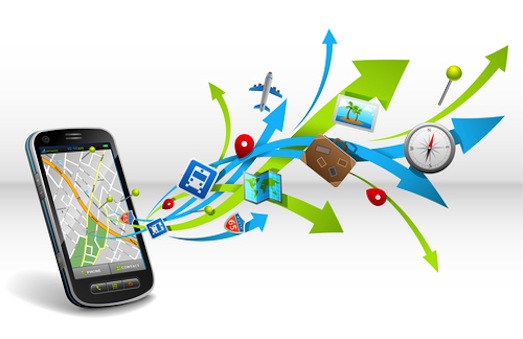In the past five years smartphones have radically changed the way many people navigate, share with friends, get news, and much more. Smartphone apps like ClimbFind, ClimbingApp and Cruxbook help users locate climbing gyms anywhere in the world. There are also numerous apps that let climbers track their sends, both indoors and out, for training and bragging purposes.
Yet with so many climbers using mobile devices, there are still relatively few gyms that are taking advantage of this technology to interact with customers.
A handful of climbing facilities have developed their own apps to provide customers with basic information about their facility. CityROCK Climbing Center in Colorado Springs, CO has developed a mobile app that displays the gym’s hours of operation, contact info, event calendar and a live web cam of the facility. The app also allows customers to sign a digital waiver form and check-in to the facility with a digital member card.
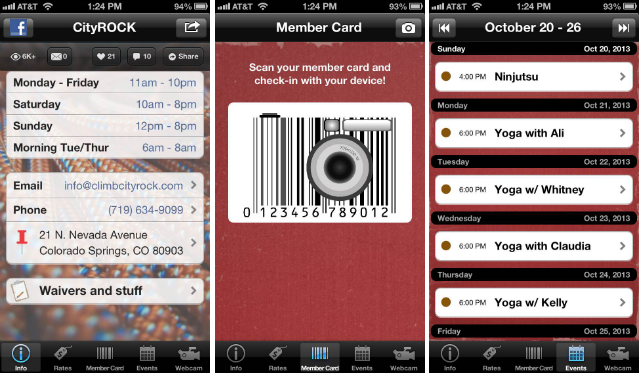
The Rock Spot in Boston, MA has an android app that offers similar features, plus coupons and a loyalty punch-pass.
Climbing gyms in Europe seem to be one mobile-step ahead of America. The Arch Climbing Wall in London, England has an iPhone app that, in addition to many of the features offered by the CityROCK and Rock Spot apps, also provides detailed information about their boulder problems. Each time the Arch sets a new circuit it gets posted to the app, and users can quickly view the circuit’s color, grades, routesetter and date.
The Arch app is built on a free app platform called theSend climbing topo apps, which allows users to create mobile guidebooks for outdoor climbing areas. Steve Golley, developer of theSend, said in an email interview, “The project was created as a not-for-profit method of generating money for bolt and access funds though guidebook sales… The Send platform provides all of the necessary tools for a team of authors to create a fully featured guide and start generating donations straight away.” While designed for outdoor crags, Golley thought it would also work well for indoor gyms and suggested it to the owner of the Arch Climbing Wall, who liked the idea.
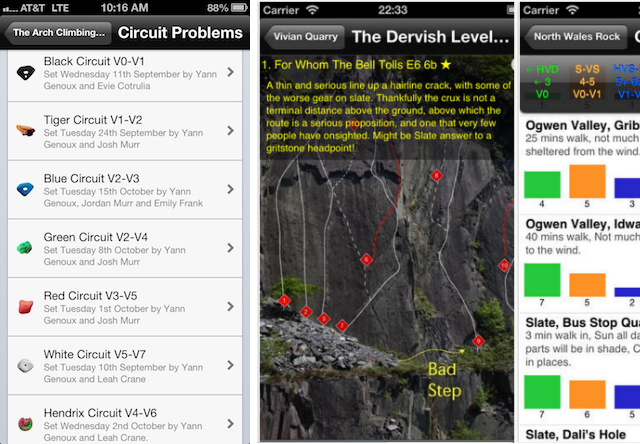
When asked about the possibility of other gyms using this platform Golley said, “It would be great to introduce the concept to other gyms, the product is turnkey as it stands but I would expect most gyms to want to do at least some customisation to make it their own implementation. In those cases I would speak to the gym owners to establish their requirements and discuss costs for the extra development. The app itself and platform tools are free to use in their current form.”
Earlier this month a developer in Switzerland released the ClimbinGym app, a mobile platform that is currently being used by Bloczone, a climbing gym in Fribourg, Switzerland. Like the Arch Climbing Wall app, the ClimbinGym app provides customers with basic info about a gym (hours, rates, website), a digital member card and detailed information about all routes in the gym (location, grade, color, routesetter, hold brand, date, type). The app also gives users the ability to filter routes by grade and get notifications when new routes in that range are added. In the gym, each route has a small barcode that can be scanned with the app to display who set the route and when. Users can then give smile/frown ratings to the route.
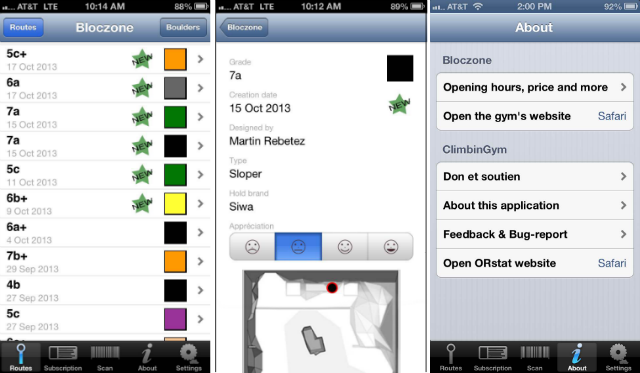
What sets the ClimbinGym app apart is the backend functions for the gym managers and routesetters. As new routes are put up the routesetter attaches a barcode with the corresponding grade and scans the barcode with the app. “He then has to add only the color and the position in the gym. This process is very quick (less than 30 sec per route) since it is all possible from the application,” said Thibaut Mauron, the developer of the app, in an email interview. Each route is fed into a master database that tracks the number of routes, age of each route, productivity of each routesetter and grade distribution. The head routesetter has access to an online dashboard that can graphically display and filter this information, and is able to task routesetters with setting or removing specific routes. Currently the online dashboard is only available in French and German, but an English version is in development.
“When we screw a new [route] in our gym, it is now really easy to store all necessary information about it in the database (screwed by, date and time, difficulty, location in the gym, art of the holds)… The app also [tells] us when a route should be unscrewed and replaced,” said Martin Rebetez, a manager at Blockzone.
While feature rich, the ClimbinGym app is not cheap. The app developer, Thibaut Mauron, said he charges 1000 CHF ($1108) for the initial setup and about 500 CHF each year for continuing access to the online portal, updates and customer support.
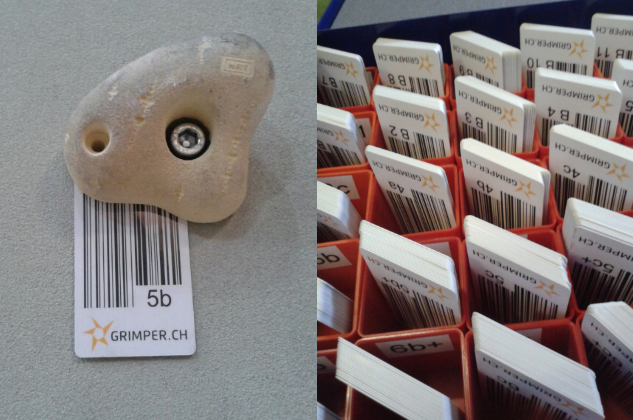

There are other software tools that help facilities manage their climbing inventory. ClimbCheck is one such tool that helps gyms monitor their routes and boulder problems, and also gives customers the ability to see when new routes are added, track which routes they have climbed and give routes a star rating. However the platform is web-based and doesn’t take advantage of the mobility and interactivity of a mobile application. Furthermore ClimbCheck appears to be on hold while they make improvements to the platform. According to their website “ClimbCheck is undergoing a complete re-build, new platform with a lot of new features and very fast!” and their Facebook page says “Coming August 31 Very soon (we promise)”. We’ll have to wait and see what new features are contained in this release, and if mobile tools will be included.
We are certainly in the early days of a technology that will have new and unimaginable impacts on how customers interact with climbing facilities. How about QR codes that link to video beta for a boulder problem? Rating tools that share the most “liked” routes on your Facebook page? Custom training programs based on what routes customers try and sent? The opportunities are almost limitless.
If your gym is already using mobile technology to engage with customers, keep your route inventory up to date, or for anything else, let us know about it in the comments.

Climbing Business Journal is an independent news outlet dedicated to covering the indoor climbing industry. Here you will find the latest coverage of climbing industry news, gym developments, industry best practices, risk management, climbing competitions, youth coaching and routesetting. Have an article idea? CBJ loves to hear from readers like you!




